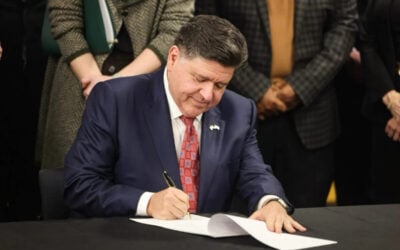Stem Inc, who benefited from the previous bidding process under the SGIP, is in full support of the move to a lottery-based application system. Source: Stem Inc
The California Public Utilities Commission (CPUC) has reformed the Self-Generation Incentive Programme (SGIP) that finances the installation of distributed generation technologies, to now benefit long-duration technologies that previously missed out on the incentive, through the extended US$83 million a year for behind-the-meter storage.
Long-duration storage market win
“I think the real winners here would be longer duration storage,” said Chris Robinson, research associate at Lux Research. “Previously the SGIP was written to award on a dollar per watt basis and now it is a dollar per watt-hour basis so technologies like flow batteries or even lithium ion systems did not compare favourably under those metrics, whereas now, they are probably awarded a little more equitably and fairly.”
Ted Ko, policy director of California-based energy storage solution provider Stem Inc, echoed this view:
Try Premium for just $1
- Full premium access for the first month at only $1
- Converts to an annual rate after 30 days unless cancelled
- Cancel anytime during the trial period
Premium Benefits
- Expert industry analysis and interviews
- Digital access to PV Tech Power journal
- Exclusive event discounts
Or get the full Premium subscription right away
Or continue reading this article for free
“Changing the incentive to dollar per watt-hour allows the SGIP to encourage longer duration energy storage systems, instead of the previous assumption that all storage systems would be two hour duration,” he told Energy-Storage.News. “However, this change originally risked developers installing arbitrarily long duration systems practically for free. Thus, the Final Decision struck the right balance in reducing the incentive as the duration became longer and providing no incentive beyond six hours.”
Long-duration storage technologies are typically capable of providing energy from three hours and beyond. These technologies receiving attention under the incentive is good news for the storage market overall; as while the short-duration market will likely continue to develop in areas where storage has yet to boom, more mature markets should see long-duration opportunities grow.
The US market in general is undergoing a transition from a frequency regulation market to a market largely led by California. The SGIP reforms by the CPUC will only help the state to keep its lead insofar as that is where the most competitive markets are, Robinson told Energy-Storage.News. Indeed, California’s storage mandate is built around capacity value or deferral. This in turn means that the market will be growing faster in megawatt-hour terms than it is in megawatt terms. This favours the average duration to increase.
Traditionally, longer-duration technologies have had barriers hindering its expansion in the market as its economics have been harder to reconcile than its short-duration counterparts, with the exception of certain geographic locations. While the consensus in general has been that the long-duration market will not catch up with the short-duration market this year, with the aid of the new SGIP reforms, there should be a marked uptick.
Residential storage
“In addition to long duration, I did see that residential systems did have a set amount of money set aside for them; so that certainly is a benefit – making sure residential systems are not left out in favour of larger, grid-scale ones,” Robinson said.
The biggest growth in California has been traced to come from residential systems and those from the commercial and industrial sector; the latter of which are more factored by the revised block incentive grants, according to Robinson. The residential sector is set to benefit from the reforms but the commercial and industrial segments should be bolstered by the new inclusion of longer-duration technologies.
“When you are looking at say a certain commercial and industrial facility, maybe they want to install a large amount of solar and store it during the day and use it night. If you want to do that factually, you need long-duration storage. So for that reason we could see commercial and industrial have a little bit more opportunity there,” said Robinson.
Manufacturing caps
It has been difficult for industry analysts to speculate on how the 20% project developer cap and simultaneous elimination of the 40% manufacturing cap will affect the market and competition.
Stem Inc however was emphatically for this change.
“Stem supported the elimination of the manufacturer cap throughout the revision process because it has been limiting the ability for customers to take advantage of the most cost effective storage technologies,” said Ko. “The CPUC did well to replace the manufacturer cap with a 20% developer cap as this preserves competition while allowing ratepayers to benefit from the rapid cost declines the industry has experienced over the last several years.”
Bidding process
Whilst that may not be the overall consensus, one area that the industry collectively voiced concerns was regarding the bidding process, which provided scope for companies to dominate the bidding process.
In particular, Stem Inc was the main contender for this. In one instance the company reportedly was able to monopolise the online submission process for the first two or three minutes of the live opening in the online bidding portal and was able to secure the first 56 applications in a previous solicitation.
“We fully support the CPUC’s decision to change to a lottery-based allocation system when the amount of applications exceeds the available budget,” said Ko. “Fortunately, the CPUC did not adopt the recommendation that the programme move to a price-based bidding process. This would have added considerable complexity to the programme and likely resulted in a slowdown in adoption and other unintended consequences.”
The revision of the bidding process is perhaps the most welcome modification to the programme; given the controversy the old model caused and hindered the diversification of competition. In terms of the block grant incentive system, similar to the California Solar Initiative, Stem feels this will also help bolster competition.
“We have long advocated for SGIP to move toward a structure similar to the California Solar Initiative and are pleased to see the stepdown incentive model reflected in the new programme design. We believe this move will drive competition and innovation that helped the solar industry thrive and ultimately outgrow the need for subsidies.”
Appraisal of the SGIP reforms
Although the SGIP still could use some modification, the effort on behalf of the CPUC to analyse and act upon feedback from a range of industry stakeholders is expected to be widely appreciated. “While there will likely always be dissatisfied parties and calls for additional changes, the fact is that the programme has come a long way. Some of the areas that will warrant further reform include: the energy efficiency audit requirements, performance-based incentive (PBI) methodology, and the budget allocated to programme administration,” said Ko.
Lux Research’s Chris Robinson was also in agreement. “I think with any of these projects, yes there are hiccups whether that be implementation or controversy in what gets funded under this.
“I think in terms of which technologies they are including and which technologies no longer to be included, it was nice to see that updated, because I think there were some technologies like the fuel cell technologies that were maybe getting funded more generously than they should. As far as other changes that are needed, I can say that so far some of the big issues it had have been addressed.”





